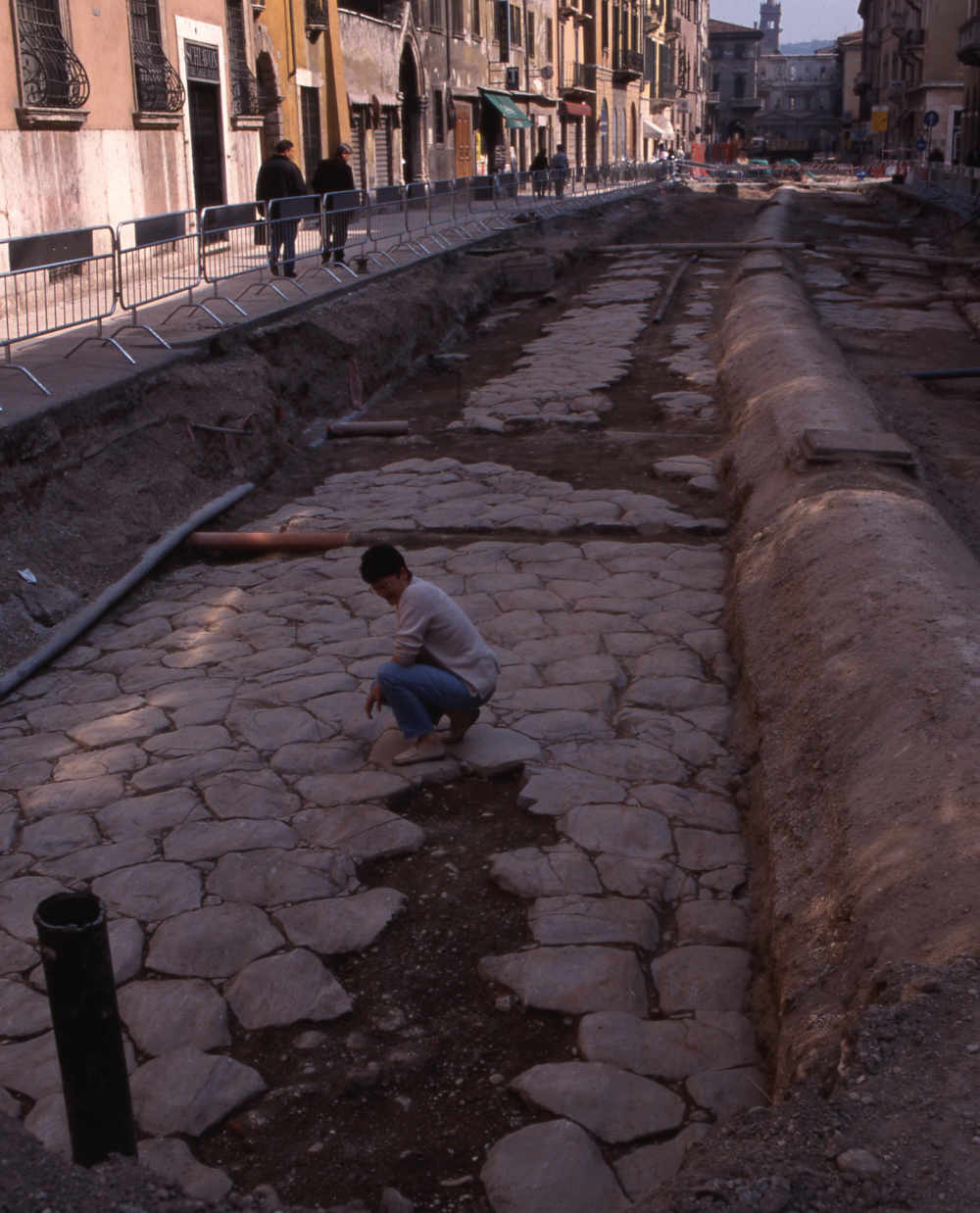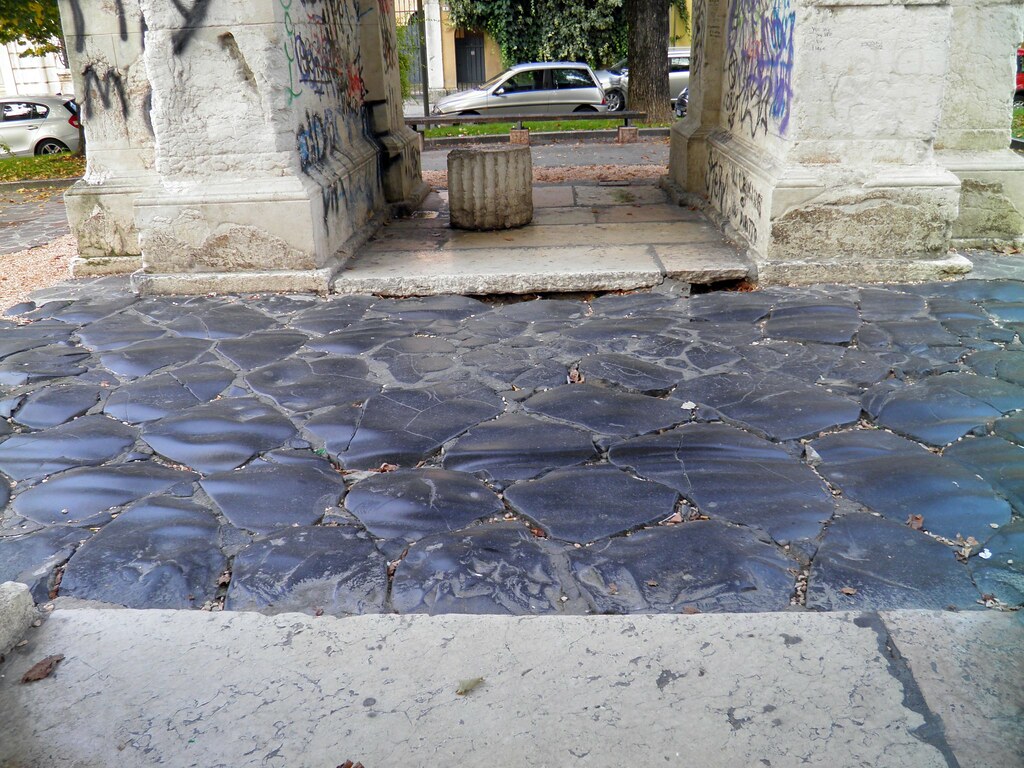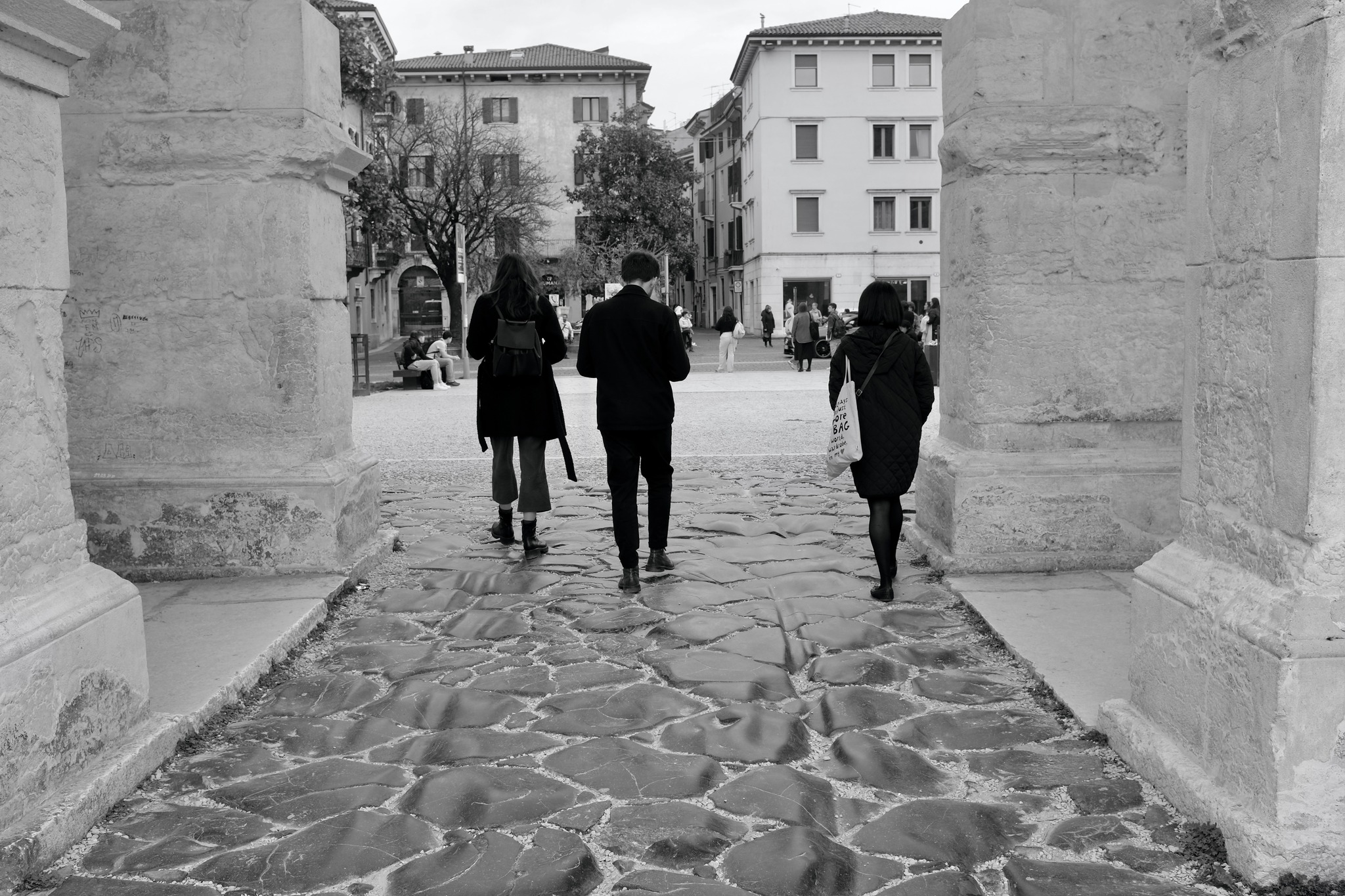In an incredible archaeological discovery, the stone slabs of the ancient Roman road, Via Postumia, were uncovered just beneath the modern streets of Verona. This road, once a vital route in the Roman Empire, reveals ruts from the wheels of Roman chariots and carts, offering a direct connection to the past.
Via Postumia: A Key Roman Artery
The Via Postumia, built in the 2nd century BCE, played a crucial role in linking northern Italy to the eastern coast. As a major military and trade route, it facilitated the movement of goods and troops, cementing Verona’s strategic position in the Roman Empire.

Corso Cavour: Modern Street Over Ancient Foundations
Today, the ancient road lies beneath Corso Cavour, Verona’s modern street. This modern overlay highlights the city’s continuous development while preserving its Roman roots. The road’s discovery underlines the enduring legacy of Roman infrastructure that still shapes the city’s landscape.

Porta Borsari: The Gateway to Roman Verona
At the end of the Via Postumia stands Porta Borsari, a monumental gate that marked the entrance to Verona. This gate regulated access and was crucial for the city’s trade and military functions, adding historical significance to the road’s role in Roman Verona.

Conclusion: A Link Between Past and Present
The uncovering of Via Postumia offers a unique opportunity to connect with the past. The ruts in the stones serve as lasting markers of Roman engineering and civilization, while Verona’s modern streets continue to bear the imprint of ancient infrastructure. This discovery strengthens the link between the city’s ancient past and its present, preserving the memory of the Roman Empire’s influence on Verona’s development.


